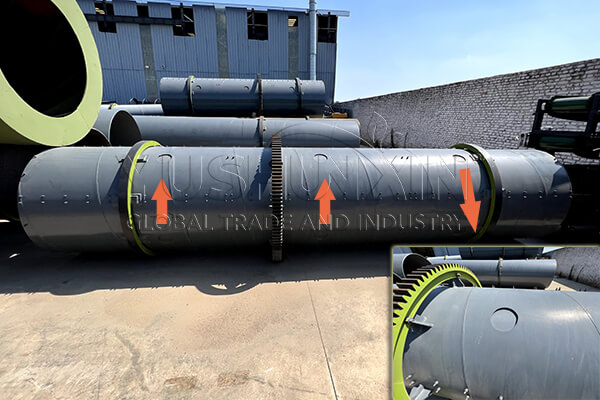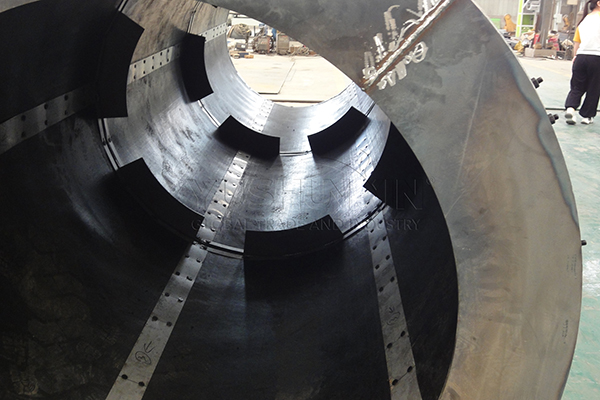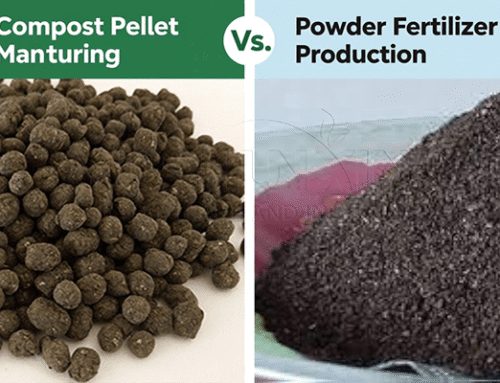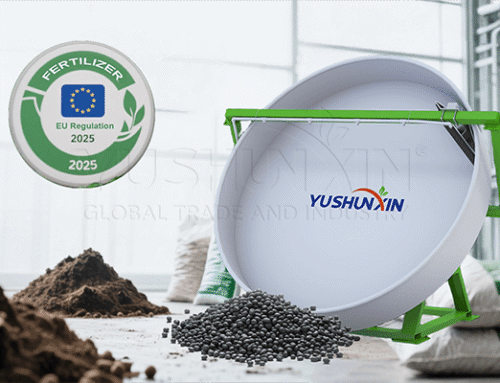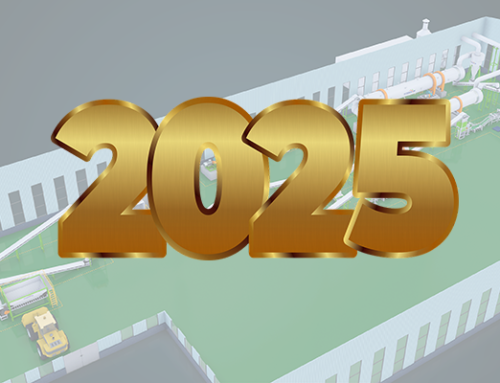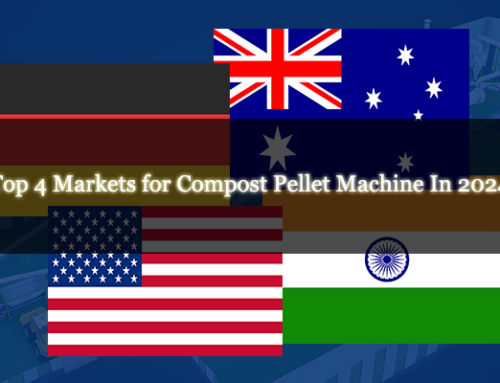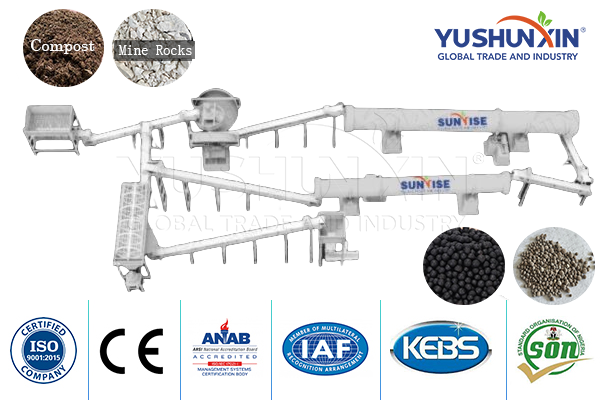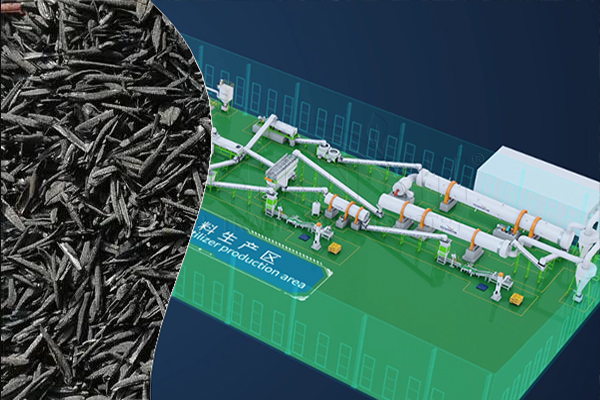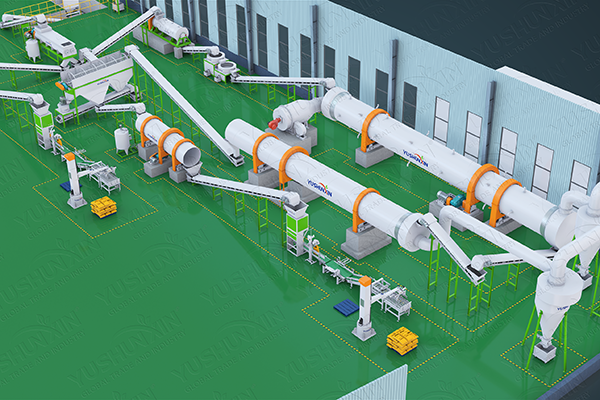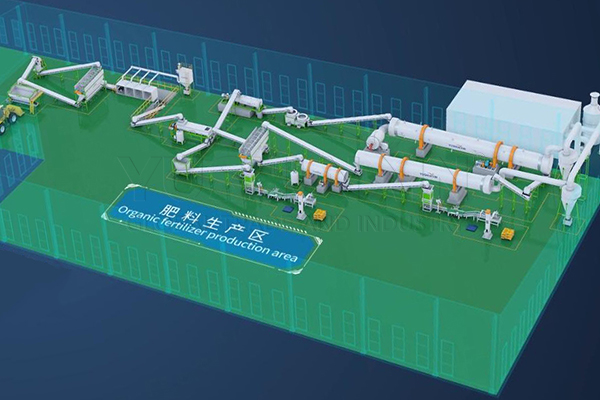Biochar pyrolysis line: Convert biomass waste into carbon sink
For large scale of biomass pyrolysis, there is industrial biochar production line for you. It contains machines of biomass grinding, biochar pyrolysis, biochar cooling and dust collection. With this system, you can prepare quality biochar with stable and homogeneous particle structure, reduced ash content, high fixed carbon percentage, and compliance with standards required for CDR certification.
For large-scale industrial compost pellet making plant setup, we recommend you the rotary drum pelletizer. Because, it can transforming large quantities of compost into uniform organic fertilizer granules in a short time. The machine is capable of produce 1 to 30 tons of granuled compost fertilizer per hour. In addition, it has unique designs of rubber lining and sticking prevention holes. Therefore, the drum granulator can withstand the long time processing of wet compost pelletizing while prevent material sticking and material waste.
Granular biochar production: Easy to apply with agricultural equipment
Although biochar from simple pyrolysis performs well as a soil amendment, many fertilizer manufacturers choose further process biochar pellets to enhance value and simplify logistics. These granulated biochar has features of strong, uniform, easy to apply with agricultural spread equipment and long-lasting carbon storage.
Are there solutions for commercial biochar granules making?
Of course. When you plan to turn pyrolysis biochar into pellets, the double roller granulation line is an ideal choice. Without drying and cooling and fully meet you requirements for 3-10 mm biochar granules production. In general, it contains material feeder, biochar crusher, roller extrusion granulator, rotary screening equipment and bagging machine.
Carbon-based fertilizer making: Mixing biochar with compost and minerals
In addition, the most recommended one of carbon reduction technologies is carbon-based fertilizer making. This process mixes biochar with compost and minerals such as Ca, Mg, and Si, to make fertilizer pellets. Because biochar acts as a high-capacity carbon sink while also improving microbial life, the produced carbon based fertilizer performs significantly better of supporting crops and plants growth. Therefore, you can earn more carbon sink.
How to mix biochar with compost to make carbon-based fertilizer?
In general, it contains 8 steps of a complete biochar fertilizer granulation line from compost. Including material batching machine, compost crusher, double shaft mixer, fertilizer granulator, sieving machine, dryer and cooler (optional), coating machine and packaging scale. They can make granular biochar fertilizer of round ball shape, 1-10 mm size, customized nutrients, etc.
It is profitable for starting Carbon Dioxide Removal by biochar making and fertilizer granulation?
It is profitable for starting Carbon Dioxide Removal by biochar making and fertilizer granulation?
In general, 1 ton of biochar = 3 tons of biomass waste disposal = 2.0–2.4 tons of CO₂ removed. And you can generates an additional revenue stream through carbon credits valued a€200–€400 per ton of CO₂.
So, whether as a local government, a business, or an individual, the above 3 carbon reduction technologies can help you earn profits.
The solutions of biochar pyrolysis lines, granulated biochar production, and carbon-based fertilizers represents good invest opportunity. Not only do they provide effective biomass waste disposal and carbon sequestration, but they also offer new revenue opportunities through carbon credits. If you have any other requirements about the projects, welcome to contact YUSHUNXIN now!

More Cases



